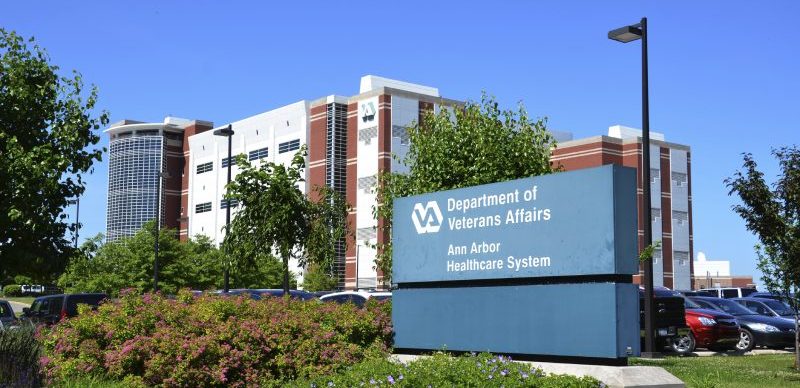The Veterans Affairs Department (VA) is playing a key role in shaping how the federal government improves customer experience (CX).
The Office of Management and Budget (OMB) tapped VA last year to be a lead agency partner tasked with improving the usability and reliability of the federal government’s most critical digital services. Collectively, those agencies are also focused on creating measurable improvements in customer satisfaction and increasing trust in the federal government by improving the experience citizens and businesses have online, in person or via the phone.
VA was identified as a high-impact service provider in government and was instrumental in shaping guidance to improve federal programs’ CX.
To better understand how VA is tackling CX internally, GovLoop sat down last fall with VA’s Dr. Lynda Davis, Chief Veterans Experience Officer, and Barbara Morton, Deputy Chief Veterans Experience Officer.
The interview below was lightly edited for clarity and length.
GovLoop: What are some key things you’re doing to ensure that the culture keeps employees engaged and positively impacts CX?
Davis: The concept of customer service for Secretary [Robert Wilkie] is not just those veteran’s families, caregivers and survivors that we are pledged to serve. He sees it inseparable from employee service and employee engagement. This is a part of the maturity process of any agency looking at becoming customer-centric. Without the organization changing its culture and the employees equipped to deliver in a customer-centric manner, this will not work. It is not sufficient to have business processes. It has to be adapted to the government context and those specific customers in that context. Veterans get services outside the federal government, and they get them inside the federal government. When they’re inside the federal government, there’s a slightly different dynamic, but we have to be even more customer-centric than when they receive services from the private sector. The secretary has committed us to do employee service and employee engagement, and, luckily, we have the ability to do that through our Veterans Experience Office and are engaging with our Veterans Health Administration (VHA) to start.
GovLoop: Are there any new initiatives, changes or improvements that we can expect to see as a result of the OMB circular work? How are you shaping CX?
Davis: We have a program called Veteran Signals. That is a way in which we survey our veterans for their input — both qualitative and quantitative — about their experience when they use our services. This is now implemented at VHA for outpatient experience. We get their feedback in real time, and we’re able to use that to inform our leadership and directors of our business, hospitals and departments to look at trends or look at a certain challenge a particular department is having and may need additional resources for.
GovLoop: How do the surveys work and what types of things are you asking the veterans?
Morton: One of our two bookends is interviewing veterans and creating journey maps. The questions that we ask are based on the journey maps and the moments that matter most to the customer. Traditionally, we’ve not necessarily focused on the moments that matter most to the customer. So that’s a different approach that we’re bringing. The questions are based on those moments that matter or based on the journey maps and interviews that we’ve done with veterans. They’re short and sweet questions, and they’re based on a model that we use that really focuses on was it an easy experience, was it an effective experience, did you feel valued as a customer and do you overall have a feeling of trust in the organization because of your experience? And they’re not just a series of questions. We also have open, textbox comments to allow participants to provide other feedback. We categorize those in three ways. One is a compliment, another is a concern and another is a recommendation. What we found is we actually get quite a bit of compliments, not as many concerns and some recommendations as well.
GovLoop: How does VA measure trust?
Davis: The trust score was one of the early additions of the Veterans Experience Officer, and it’s based on the Forrester model of using customer trust. It talks about trust and the sub-metrics of expectedness, efficiency and emotional resonance of an experience or a service that is delivered. In the Veteran Signals process, we could adapt the questions further to not just macro trust scores, which are good to know if you’re trending in the right direction organizationally, but they’re hard to take action on. When we had the specific comments and the ability to base our questions on what the veterans cared about, it became more relevant to them and more useful to us.
GovLoop: Based on the feedback and the metrics, how would you assess the level of trust veterans have in VA?
Davis: It has continued to go up since we began the surveys in 2017. We also break it down by specific area, and what we find is that veterans have a higher degree of trust and comfort and confidence in their providers than they do in the processes, like a scheduling process. It’s sometimes the business process, the mechanism, the logistics, of getting in to see those providers that is the challenge, especially in the Veterans Health Administration. They will feel good about the regional office representative from the Veterans Benefits Administration who can work with them on the phone and take the time to see them even in person, but the process of getting a rating and determining their vet benefits, which change over time, can be a challenge. One of the things we’re doing with the data we’re getting now, as we’re changing the culture, is to then go back and change our business processes.





Leave a Reply
You must be logged in to post a comment.